#二叉树的递归遍历
// 前序遍历·递归·LC144_二叉树的前序遍历
class Solution {public List<Integer> preorderTraversal(TreeNode root) {List<Integer> result = new ArrayList<Integer>(); //也可以把result 作为全局变量,只需要一个函数即可。preorder(root, result);return result;}public void preorder(TreeNode root, List<Integer> result) {if (root == null) {return;}result.add(root.val);preorder(root.left, result);preorder(root.right, result);}
}
// 中序遍历·递归·LC94_二叉树的中序遍历
class Solution {public List<Integer> inorderTraversal(TreeNode root) {List<Integer> res = new ArrayList<>();inorder(root, res);return res;}void inorder(TreeNode root, List<Integer> list) {if (root == null) {return;}inorder(root.left, list);list.add(root.val); // 注意这一句inorder(root.right, list);}
}
// 后序遍历·递归·LC145_二叉树的后序遍历
class Solution {public List<Integer> postorderTraversal(TreeNode root) {List<Integer> res = new ArrayList<>();postorder(root, res);return res;}void postorder(TreeNode root, List<Integer> list) {if (root == null) {return;}postorder(root.left, list);postorder(root.right, list);list.add(root.val); // 注意这一句}
}
后面写二叉树的递归算法,****就是要注意1、采用什么递归遍历 2、对结点的处理逻辑
一般是中左右,对中结点进行处理。
如果需要用到左右结点的返回值的,使用后续遍历,左右中。
#二叉树的迭代遍历
前序和中序是完全两种代码风格,这是因为前序遍历中访问节点(遍历节点)和处理节点(将元素放进result数组中)可以同步处理****,但是中序就无法做到同步!
对于中序遍历可以用一个指针来访问节点,访问到最底层,每次将访问的节点放进栈,如果访问到了最底层,将访问的节点放进栈。
再来看后序遍历,先序遍历是中左右,后续遍历是左右中,那么我们只需要调整一下先序遍历的代码顺序,就变成中右左的遍历顺序,然后在反转result数组,输出的结果顺序就是左右中了。
二叉树的非递归遍历要使用栈。
// 前序遍历顺序:中-左-右,入栈顺序:中-右-左
class Solution {public List<Integer> preorderTraversal(TreeNode root) {List<Integer> result = new ArrayList<>();if (root == null){return result; //返回空链表}Stack<TreeNode> stack = new Stack<>();stack.push(root);while (!stack.isEmpty()){TreeNode node = stack.pop();result.add(node.val);if (node.right != null){stack.push(node.right);}if (node.left != null){stack.push(node.left);}}return result;}
}// 中序遍历顺序: 左-中-右 入栈顺序: 左-右
class Solution {public List<Integer> inorderTraversal(TreeNode root) {List<Integer> result = new ArrayList<>();if (root == null){return result;}Stack<TreeNode> stack = new Stack<>();TreeNode cur = root;while (cur != null || !stack.isEmpty()){if (cur != null){ // 指针来访问节点,访问到最底层stack.push(cur); // 指针来访问节点,访问到最底层 不等于空,入栈并指向左孩子cur = cur.left;}else{ //从栈里弹出的数据,就是要处理的数据(放进result数组里的数据)cur = stack.pop();result.add(cur.val); //中cur = cur.right; //右}}return result;}
}// 后序遍历顺序 左-右-中 入栈顺序:中-左-右 出栈顺序:中-右-左, 最后翻转结果
class Solution {public List<Integer> postorderTraversal(TreeNode root) {List<Integer> result = new ArrayList<>();if (root == null){return result;}Stack<TreeNode> stack = new Stack<>();stack.push(root);while (!stack.isEmpty()){TreeNode node = stack.pop();result.add(node.val);if (node.left != null){ //先放左子树,再放右子树stack.push(node.left);}if (node.right != null){stack.push(node.right);}}Collections.reverse(result); return result;}
}
二叉树的层序遍历
102、二叉树的层序遍历
一层一层的处理
class Solution {public List<List<Integer>> levelOrder(TreeNode root) {List<List<Integer>> result= new ArrayList<>();if(root==null) return result;Queue<TreeNode> queue =new LinkedList<>();queue.add(root);while(!queue.isEmpty()) //控制层数{List<Integer> tmp=new ArrayList<>(); //每次都新建一个ArrayList 防止被修改int len=queue.size(); //每层的个数while(len>0) //遍历每层的结点,也可以使用for循环{TreeNode node =queue.poll();tmp.add(node.val);if(node.left!=null)queue.add(node.left);if(node.right!=null)queue.add(node.right);len--;}result.add(tmp);}return result;}
}
#107、二叉树的层序遍历二
给你二叉树的根节点 root ,返回其节点值 自底向上的层序遍历 。 (即按从叶子节点所在层到根节点所在的层,逐层从左向右遍历)
示例 1:
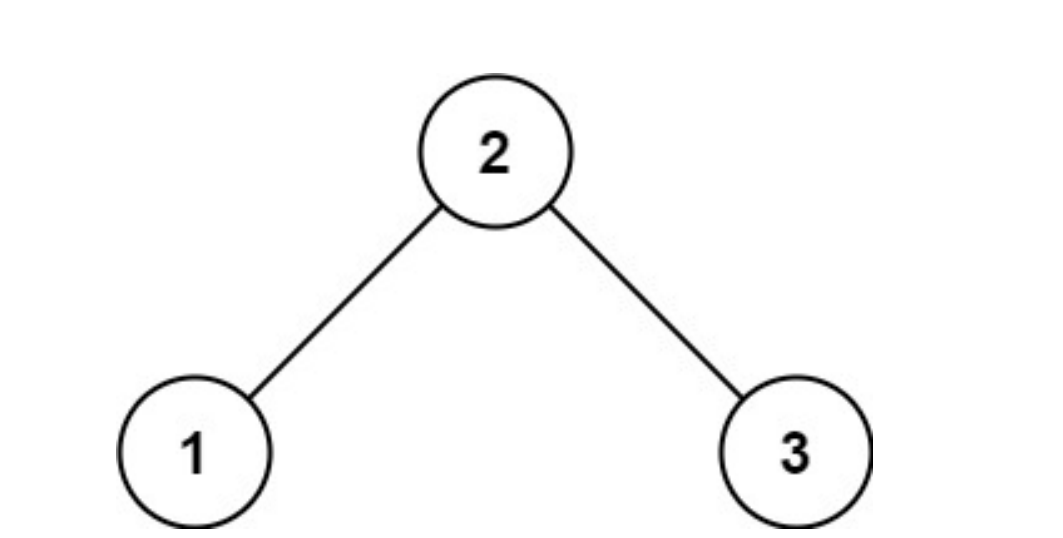
输入:root = [3,9,20,null,null,15,7]
输出:[[15,7],[9,20],[3]]
示例 2:
输入:root = [1]
输出:[[1]]
示例 3:
输入:root = []
输出:[]
把每层的列表从头插入结果中就可以
class Solution {public List<List<Integer>> levelOrderBottom(TreeNode root) {List<List<Integer>> ans= new ArrayList<List<Integer>>();if(root==null) return ans;Queue<TreeNode> queue =new LinkedList<>();queue.add(root);while(!queue.isEmpty()){List<Integer> tmp= new ArrayList<>();int len=queue.size();while(len>0){TreeNode node =queue.poll();tmp.add(node.val);if(node.left!=null) queue.add(node.left);if(node.right!=null)queue.add(node.right);len--;}ans.add(0,tmp); //每次都从头开始插入}return ans;}
}
#199、二叉树的右视图
给定一个二叉树的 根节点root,想象自己站在它的右侧,按照从顶部到底部的顺序,返回从右侧所能看到的节点值。
示例 1:

输入: [1,2,3,null,5,null,4]
输出: [1,3,4]
示例 2:
输入: [1,null,3]
输出: [1,3]
示例 3:
输入: []
输出: []
即利用队列的长度,把每一层的最后一个结点加入结果中
class Solution {public List<Integer> rightSideView(TreeNode root) {//即看到的都是每一层的最后一个结点List<Integer> ans =new ArrayList<>();Queue<TreeNode> queue =new LinkedList<>();if(root==null) return ans; //一定要判断为空的情况,否则会空指针异常queue.add(root);while(!queue.isEmpty()){int len =queue.size();while(len>0){TreeNode node =queue.poll();if(len==1) ans.add(node.val); //把每一层的最后一个结点加入if(node.left!=null)queue.add(node.left);if(node.right!=null)queue.add(node.right);len--;}}return ans;}
}
637、二叉树的层平均值
给定一个非空二叉树的根节点 root , 以数组的形式返回每一层节点的平均值。与实际答案相差 10-5 以内的答案可以被接受。
示例 1:

输入:root = [3,9,20,null,null,15,7]
输出:[3.00000,14.50000,11.00000]
解释:第 0 层的平均值为 3,第 1 层的平均值为 14.5,第 2 层的平均值为 11 。
因此返回 [3, 14.5, 11] 。
使用一个sum来计算每层的和
class Solution {public List<Double> averageOfLevels(TreeNode root) {List<Double> ans =new ArrayList<>();Queue<TreeNode> queue =new LinkedList<>();queue.add(root);while(!queue.isEmpty()){int len =queue.size();int n=len;double sum=0;while(len>0){TreeNode node =queue.poll();sum += node.val;if(node.left!=null)queue.add(node.left);if(node.right!=null)queue.add(node.right);len--;}ans.add(sum/n);}return ans;}
}
429、N叉树的层序遍历
给定一个 N 叉树,返回其节点值的层序遍历。(即从左到右,逐层遍历)。
树的序列化输入是用层序遍历,每组子节点都由 null 值分隔(参见示例)。
示例 1:
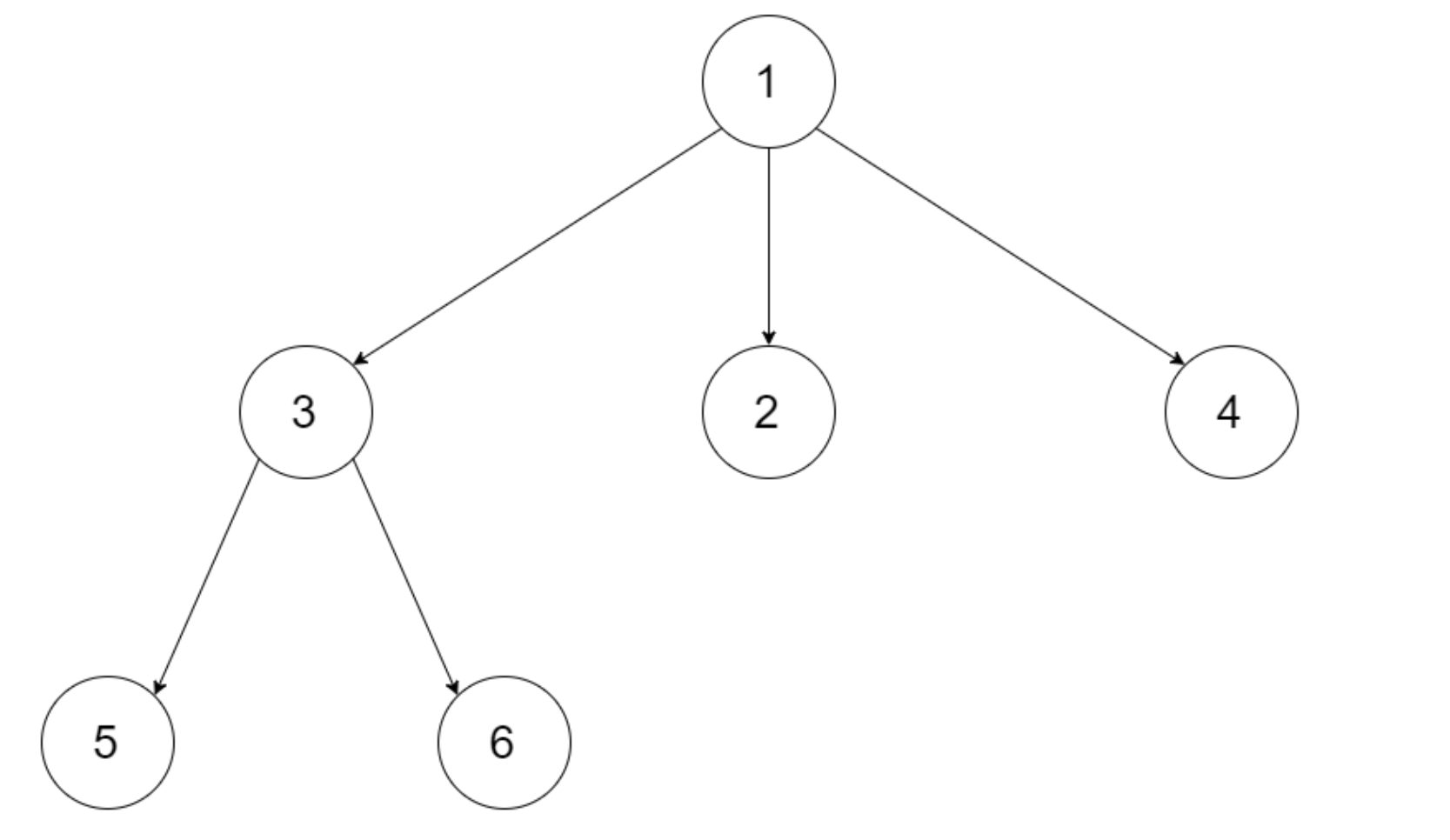
输入:root = [1,null,3,2,4,null,5,6]
输出:[[1],[3,2,4],[5,6]]
class Solution {public List<List<Integer>> levelOrder(Node root) {List<List<Integer>> ans= new ArrayList<List<Integer>>();Queue<Node> queue = new LinkedList<>();if(root==null) return ans;queue.add(root);while(!queue.isEmpty()){int len =queue.size();List<Integer> tmp=new ArrayList<>();while(len>0){Node node =queue.poll();tmp.add(node.val);len--;List<Node> childrens =node.children;for(Node c:childrens){if(c!=null) queue.add(c);}}ans.add(tmp);}return ans; }
}
515、找出每层的最大值
给定一棵二叉树的根节点 root ,请找出该二叉树中每一层的最大值。
示例1:
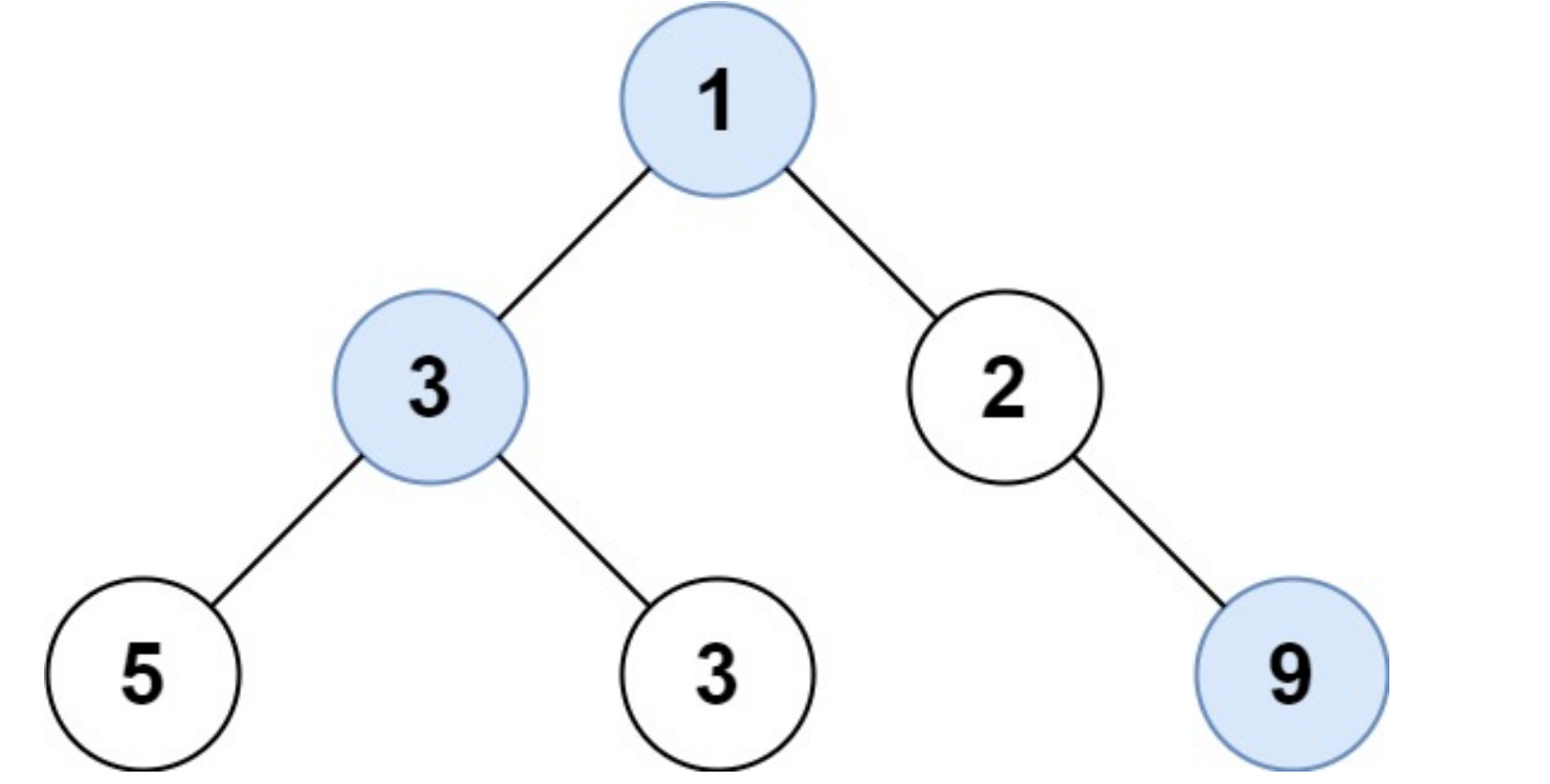
输入: root = [1,3,2,5,3,null,9]
输出: [1,3,9]
class Solution {public List<Integer> largestValues(TreeNode root) {List<Integer> ans =new ArrayList<>();if(root==null) return ans;Queue<TreeNode> queue =new LinkedList<>();queue.add(root);while(!queue.isEmpty()){int len =queue.size();int max=Integer.MIN_VALUE; //记录每一层的最大值while(len>0){TreeNode node = queue.poll();if(node.val>max)max=node.val;if(node.left!=null)queue.add(node.left);if(node.right!=null)queue.add(node.right);len--;}ans.add(max);}return ans;}
}
116、填充每个节点的下一个右侧节点指针
给定一个 完美二叉树 ,其所有叶子节点都在同一层,每个父节点都有两个子节点。二叉树定义如下:
struct Node {int val;Node *left;Node *right;Node *next;
}
填充它的每个 next 指针,让这个指针指向其下一个右侧节点。如果找不到下一个右侧节点,则将 next 指针设置为 NULL。
初始状态下,所有 next 指针都被设置为 NULL。
示例 1:
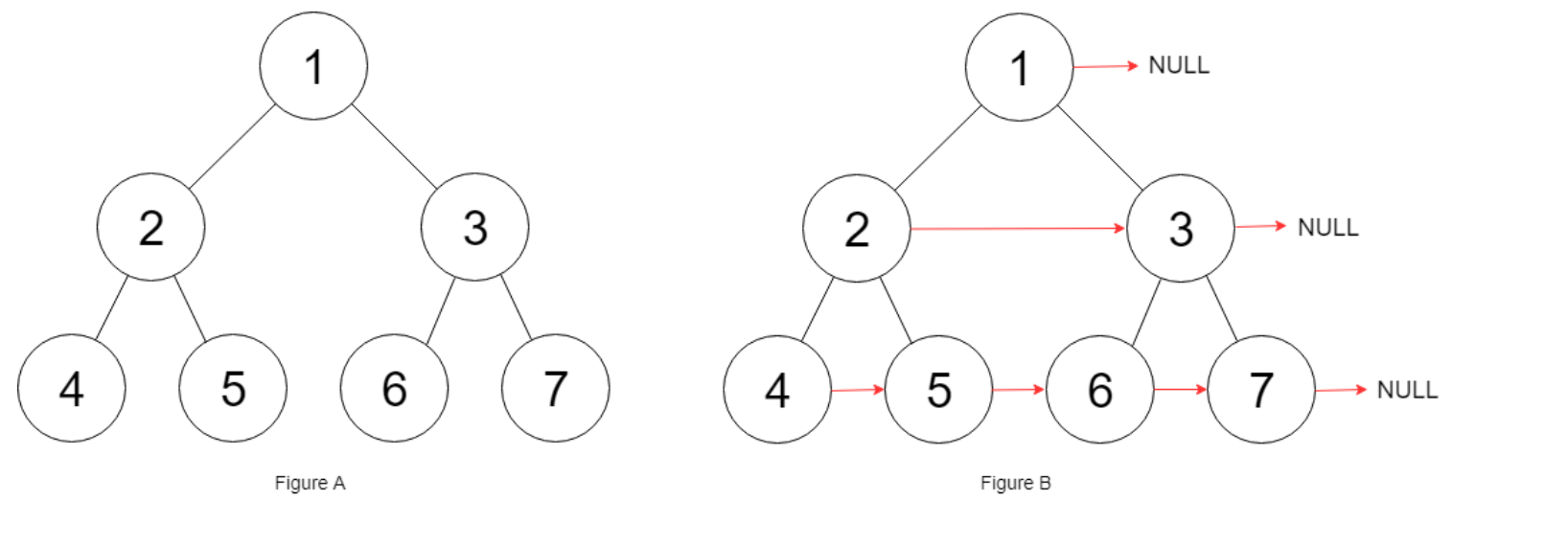
class Solution {public Node connect(Node root) {Queue<Node> queue =new LinkedList<>();if(root==null) return root;queue.add(root);while(!queue.isEmpty()){int len =queue.size();while(len>0){ Node node = queue.poll(); //本质上还是找到每层的最后一个结点if(len==1){node.next=null;}else{Node nextNode =queue.peek();node.next=nextNode;}len--;if(node.left!=null)queue.add(node.left);if(node.right!=null)queue.add(node.right);}}return root;}
}
#104、 二叉树的最大深度
使用前序求的就是深度,使用后序呢求的是高度
层序遍历:
class Solution {public int maxDepth(TreeNode root) {if(root==null) return 0;Queue<TreeNode> queue = new LinkedList<>();queue.add(root);int hight=0;while(!queue.isEmpty()){int len=queue.size();while(len>0){TreeNode node =queue.poll();if(node.left!=null)queue.add(node.left);if(node.right!=null)queue.add(node.right);len--;}hight++;}return hight;}
}
后续遍历:
class Solution {public int maxDepth(TreeNode root) {if(root==null) return 0;int leftDepth =maxDepth(root.left); //左int rightDepth =maxDepth(root.right); //右return Math.max(leftDepth,rightDepth)+1; //中}
}
前序遍历:
class Solution {public:int result;//使用result来记录最大深度void getDepth(TreeNode* node, int depth) {result = depth > result ? depth : result; // 中if (node->left == NULL && node->right == NULL) return ;if (node->left) { // 左getDepth(node->left, depth + 1);}if (node->right) { // 右getDepth(node->right, depth + 1);}return ;}int maxDepth(TreeNode* root) {result = 0;if (root == 0) return result;getDepth(root, 1);return result;}
};
101、 二叉树的最小深度
给定一个二叉树,找出其最小深度。
最小深度是从根节点到最近叶子节点的最短路径上的节点数量。
说明:叶子节点是指没有子节点的节点。
示例 1:
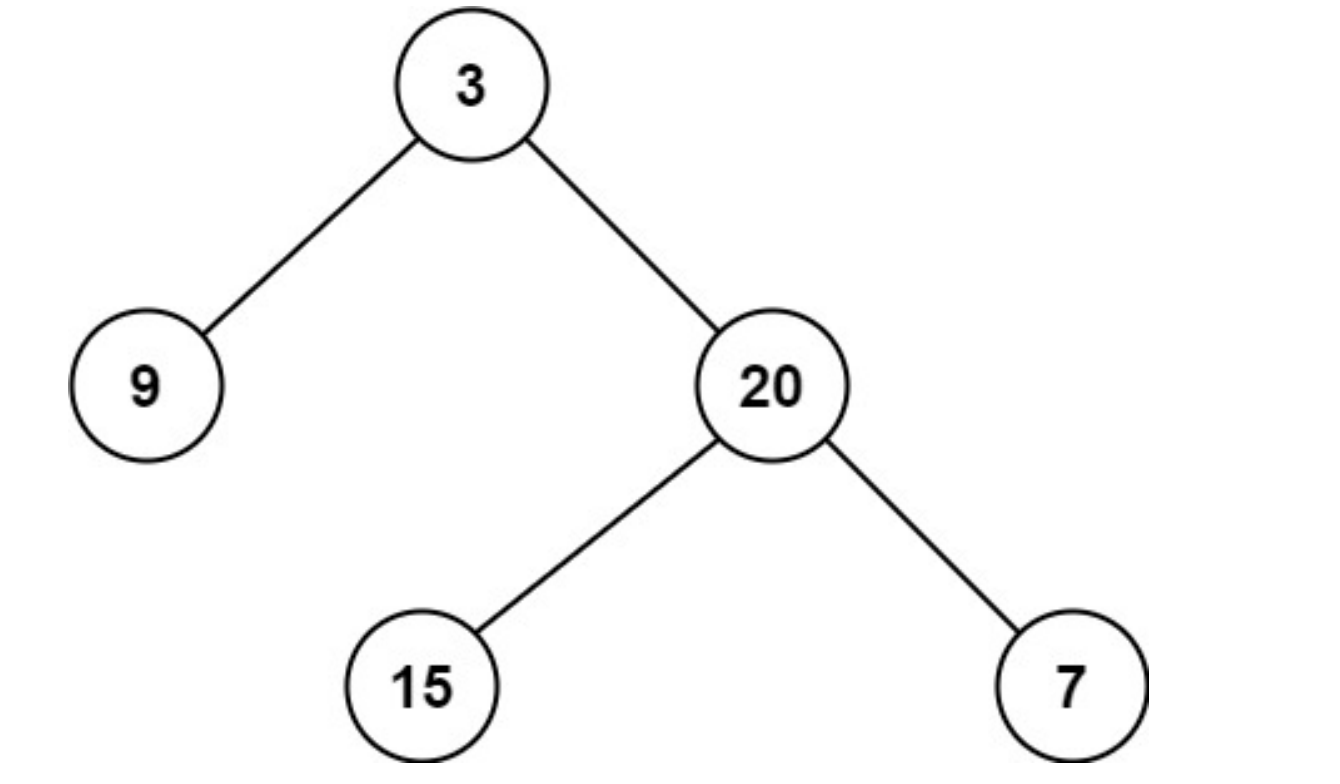
输入:root = [3,9,20,null,null,15,7]
输出:2
即当左右孩子都为空的时候就返回
层序遍历
class Solution {public int minDepth(TreeNode root) {if(root==null) return 0;Queue<TreeNode> queue = new LinkedList<>();queue.add(root);int depth=0;while(!queue.isEmpty()){int len=queue.size();depth++;while(len>0){TreeNode node =queue.poll();if(node.left!=null)queue.add(node.left);if(node.right!=null)queue.add(node.right);if(node.right==null && node.left==null)return depth;len--;}}return depth;}
}
递归法
如果左子树为空,右子树不为空,说明最小深度是 1 + 右子树的深度。
反之,右子树为空,左子树不为空,最小深度是 1 + 左子树的深度。 最后如果左右子树都不为空,返回左右子树深度最小值 + 1 。
class Solution {//递归法public int minDepth(TreeNode root) {if(root==null) return 0;int leftDepth = minDepth(root.left);int rightDepth = minDepth(root.right);if(root.left==null)return rightDepth+1; //否则没有左孩子的分支会被当成最小值if(root.right==null)return leftDepth+1;return Math.min(leftDepth,rightDepth)+1;}
}
#226、翻转二叉树
给你一棵二叉树的根节点 root ,翻转这棵二叉树,并返回其根节点。
示例 1:
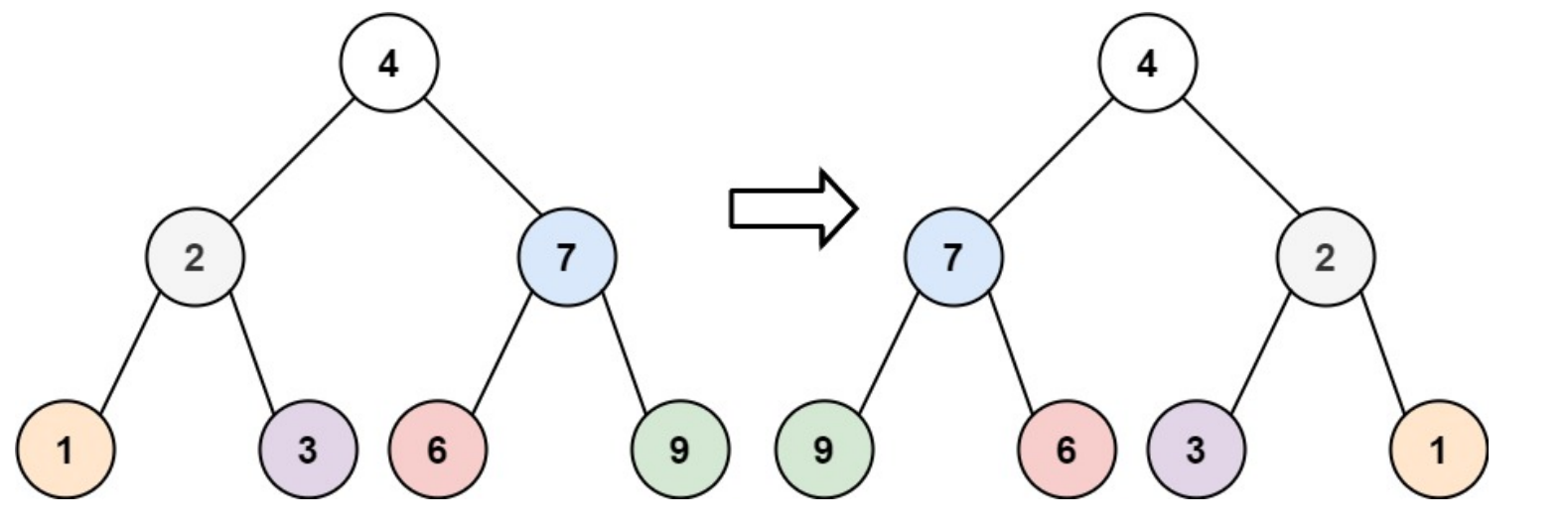
输入:root = [4,2,7,1,3,6,9]
输出:[4,7,2,9,6,3,1]
采用层序遍历,每取出一个结点就交换其左右孩子
class Solution {public TreeNode invertTree(TreeNode root) {//采用层序遍历Queue<TreeNode> queue =new LinkedList<>();if(root==null) return root;queue.add(root);while(!queue.isEmpty()){int len =queue.size();while(len>0){TreeNode node=queue.poll();TreeNode tmp =node.right;node.right=node.left;node.left=tmp;if(node.left!=null) queue.add(node.left);if(node.right!=null) queue.add(node.right);len--;}}return root;}
}
递归法:
对一个结点交换左右,然后进行左右递归
class Solution {/*** 前后序遍历都可以* 中序不行,因为先左孩子交换孩子,再根交换孩子(做完后,右孩子已经变成了原来的左孩子),再右孩子交换孩子(此时其实是对原来的左孩子做交换)*/public TreeNode invertTree(TreeNode root) {if (root == null) {return null;}invertTree(root.left);invertTree(root.right);swapChildren(root); //也可以中左右return root;}private void swapChildren(TreeNode root) {TreeNode tmp = root.left;root.left = root.right;root.right = tmp;}
}
#114、二叉树展开为链表
给你二叉树的根结点 root ,请你将它展开为一个单链表:
- 展开后的单链表应该同样使用 TreeNode ,其中 right 子指针指向链表中下一个结点,而左子指针始终为 null 。
- 展开后的单链表应该与二叉树 先序遍历 顺序相同。
示例 1:
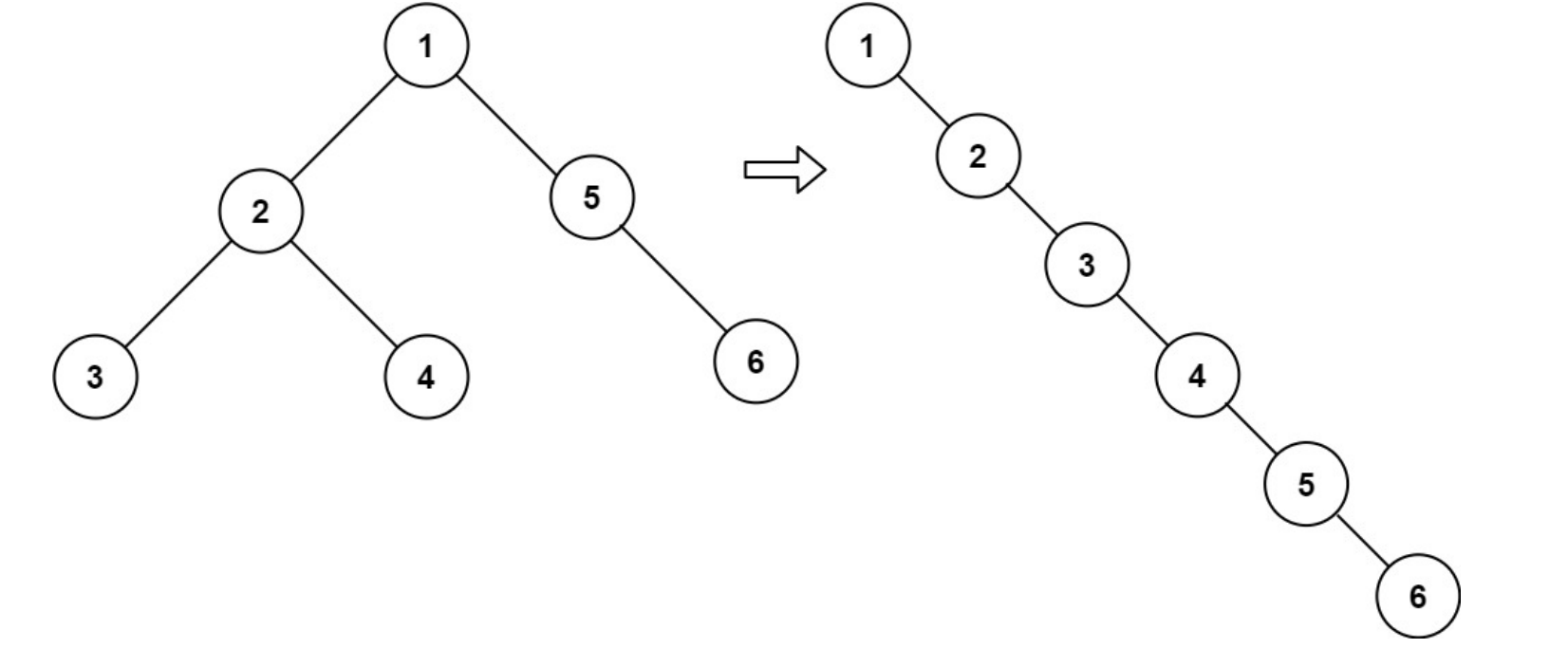
输入:root = [1,2,5,3,4,null,6]
输出:[1,null,2,null,3,null,4,null,5,null,6]
class Solution {//保存前序遍历的结果List<TreeNode> list=new ArrayList<>();public void flatten(TreeNode root) {preorder(root);for(int i=1;i<list.size();i++){TreeNode pre=list.get(i-1);TreeNode cur=list.get(i);pre.left=null;pre.right=cur;}}//构造树,然后值是结点public void preorder(TreeNode root){if(root==null)return;list.add(root);preorder(root.left);preorder(root.right);}
}
递归+回溯的思路,将前序遍历反过来遍历,那么第一次访问的就是前序遍历中最后一个节点。那么可以调整最后一个节点,再将最后一个节点保存到pre里,再调整倒数第二个节点,将它的右子树设置为pre,再调整倒数第三个节点,依次类推直到调整完毕。和反转链表的递归思路是一样的。
class Solution {//反前序遍历TreeNode pre;public void flatten(TreeNode root) {if(root==null)return;flatten(root.right);flatten(root.left);//先找到最后一个结点,然后记录root.left=null;root.right=pre;pre=root;}}
#101、对称二叉树
给你一个二叉树的根节点 root , 检查它是否轴对称。
示例 1:
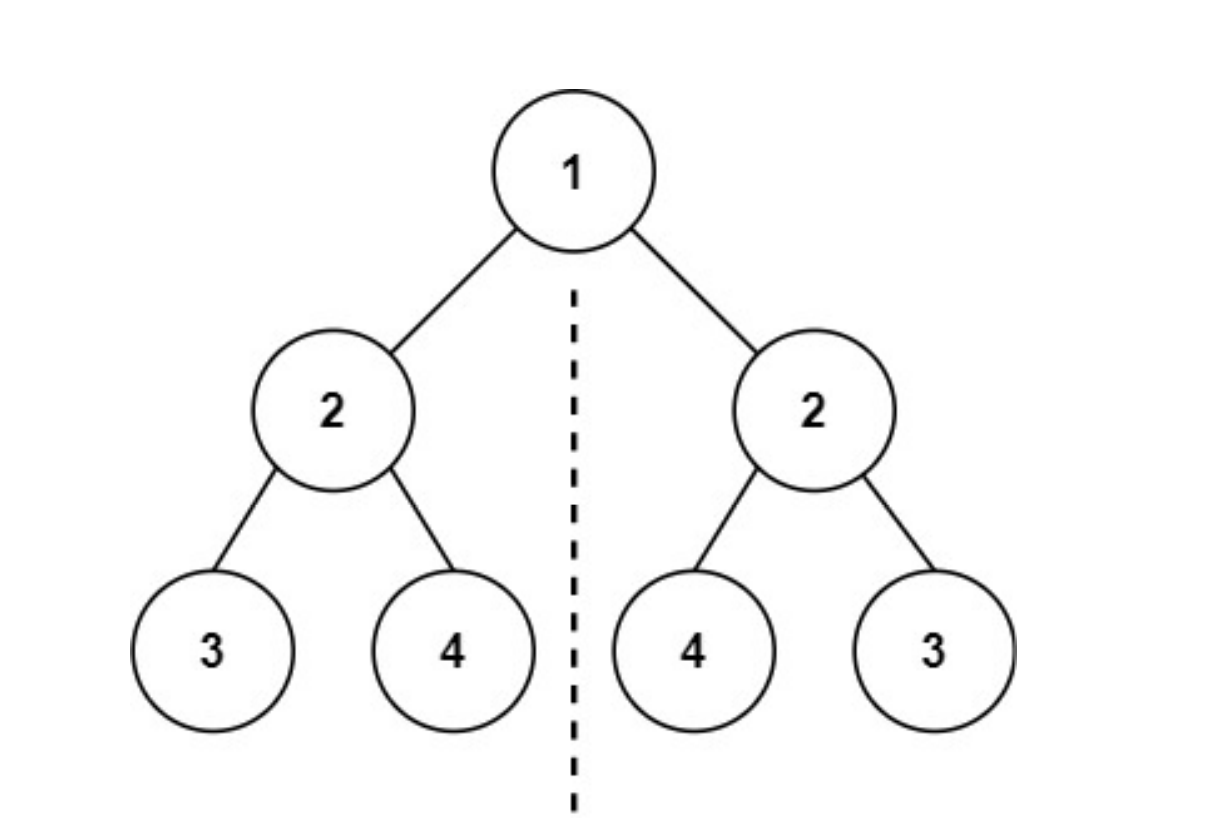
输入:root = [1,2,2,3,4,4,3]
输出:true
示例 2:

输入:root = [1,2,2,null,3,null,3]
输出:false
使用一个队列,类似于层序遍历的方式,只不过不用加len来判断层数,并且空结点也要入队。
而本题的迭代法中我们使用了队列,需要注意的是这不是层序遍历,而且仅仅通过一个容器来成对的存放我们要比较的元素,
class Solution {public boolean isSymmetric(TreeNode root) {//把空节点也看成结点Queue<TreeNode> queue =new LinkedList<>();queue.add(root.left);queue.add(root.right);while(!queue.isEmpty()){//不符合就返回falseTreeNode leftnode =queue.poll(); //每次取出需要比较的两个结点TreeNode rightnode =queue.poll(); //每次取出需要比较的两个结点if(leftnode==null && rightnode ==null)continue;if(leftnode==null||rightnode==null||leftnode.val!=rightnode.val)return false;queue.add(leftnode.left);queue.add(rightnode.right);queue.add(leftnode.right);queue.add(rightnode.left);}return true;}
}
递归法:
class Solution {private boolean copmare(TreeNode leftnode, TreeNode rightnode){if(leftnode==null && rightnode!=null) return false;else if(leftnode!=null && rightnode==null) return false;else if(leftnode==null && rightnode==null) return true;else if(leftnode.val!=rightnode.val) return false; //也可以合在一起判断else //说明leftnode和rightnode相等return copmare(leftnode.left,rightnode.right) && copmare(leftnode.right,rightnode.left);}public boolean isSymmetric(TreeNode root) {return copmare(root.left,root.right);}
}
100、相同的树
给你两棵二叉树的根节点 p 和 q ,编写一个函数来检验这两棵树是否相同。
如果两个树在结构上相同,并且节点具有相同的值,则认为它们是相同的。
示例 1:
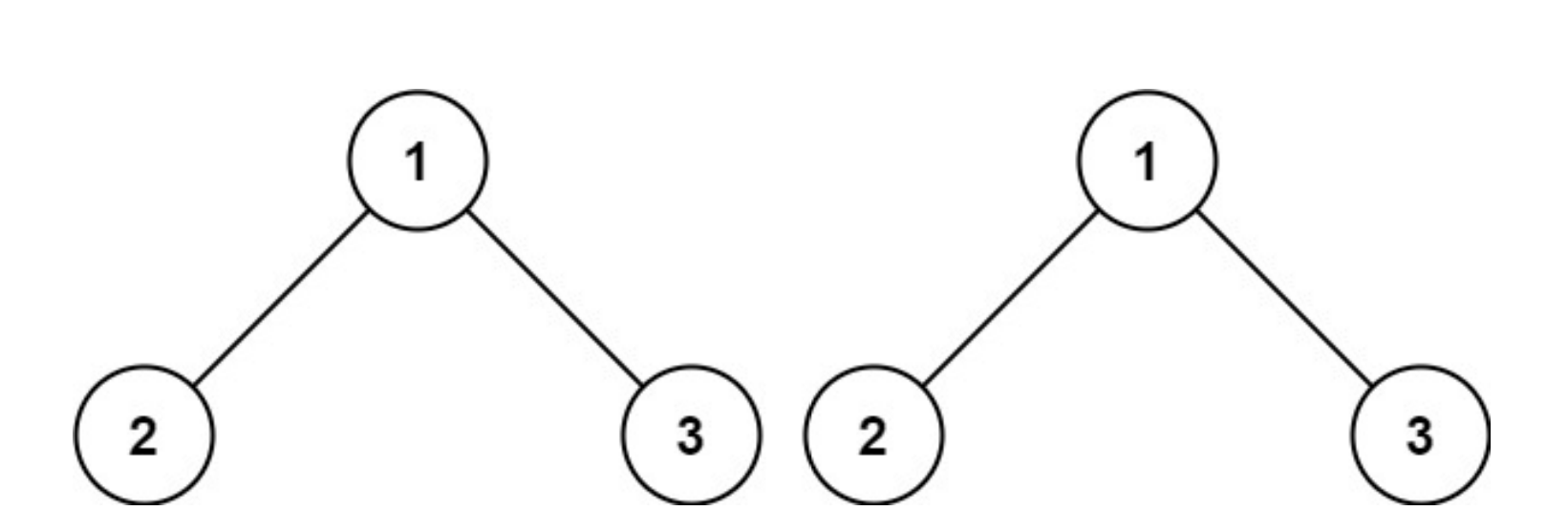
输入:p = [1,2,3], q = [1,2,3]
输出:true
和对称二叉树一样
class Solution {public boolean isSameTree(TreeNode p, TreeNode q) {//使用同一个队列Queue<TreeNode> queue =new LinkedList<>();queue.add(p);queue.add(q);while(!queue.isEmpty()){TreeNode node1 =queue.poll();TreeNode node2 =queue.poll();if(node1==null && node2==null)continue;else if(node1==null &&node2!=null)return false;else if(node1!=null && node2==null)return false;else if(node1.val!=node2.val)return false;queue.add(node1.left);queue.add(node2.left);queue.add(node1.right);queue.add(node2.right);}return true;}
}
递归法
class Solution {//递归法:求树是否相等public boolean isSameTree(TreeNode p, TreeNode q) {if(p==null&& q==null) return true;else if(p==null &&q!=null) return false;else if(p!=null &&q==null) return false;else if(p.val!=q.val) return false;else //即结点相同,判读左右结点{return isSameTree(p.left,q.left) && isSameTree(p.right,q.right);}}
}
572、另一棵树的子树
给你两棵二叉树 root 和 subRoot 。检验 root 中是否包含和 subRoot 具有相同结构和节点值的子树。如果存在,返回 true ;否则,返回 false 。
二叉树 tree 的一棵子树包括 tree 的某个节点和这个节点的所有后代节点。tree 也可以看做它自身的一棵子树。
示例 1:
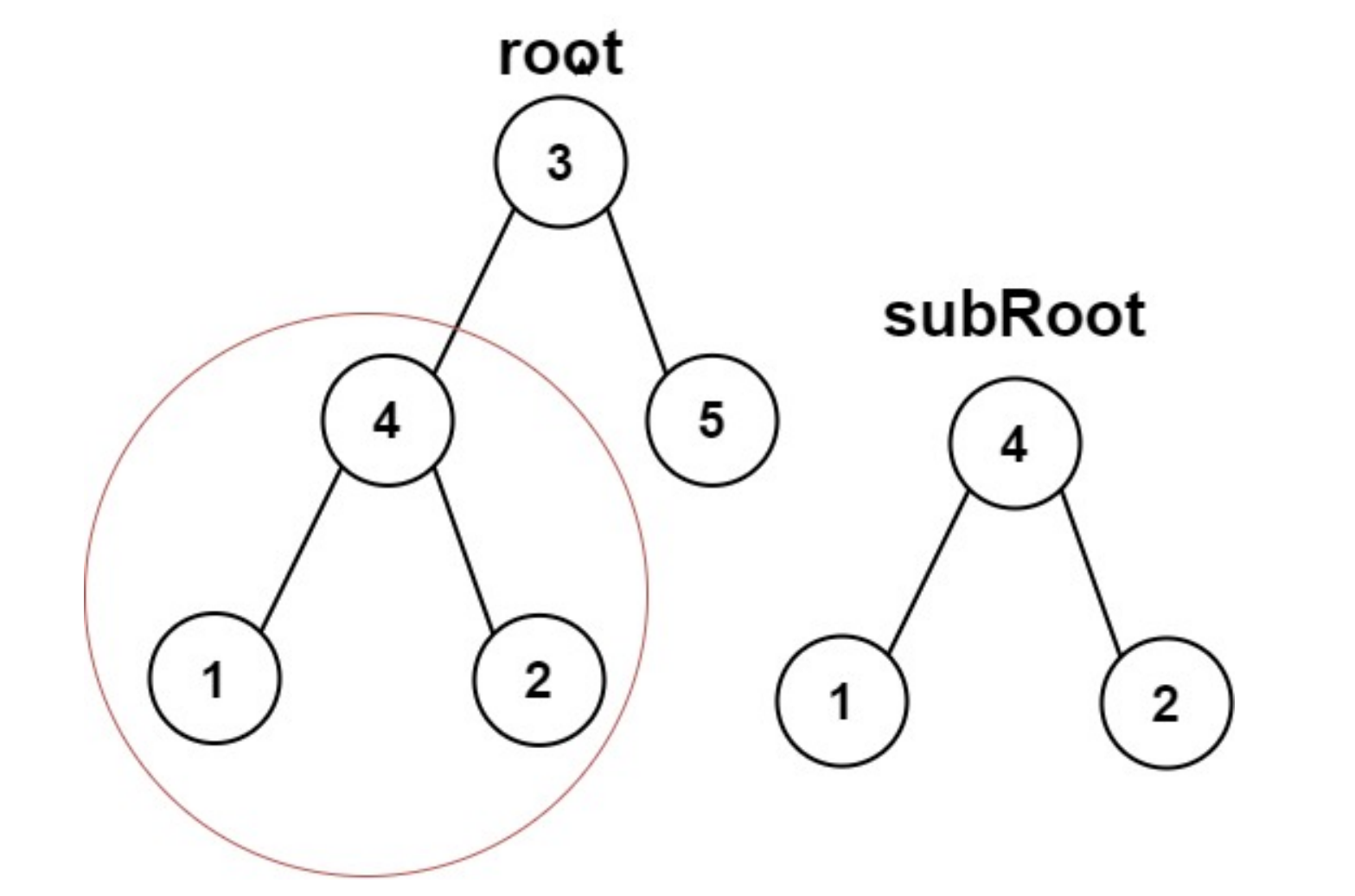
输入:root = [3,4,5,1,2], subRoot = [4,1,2]
输出:true
采用遍历+判断树是否相等
class Solution {public boolean isSameTree(TreeNode p, TreeNode q){if(p==null && q==null) return true;else if(p==null||q==null||p.val!=q.val) return false; //直接合在一起写else{ //说明结点值相同return isSameTree(p.left,q.left) && isSameTree(p.right,q.right);}}public boolean isSubtree(TreeNode root, TreeNode subRoot) {Queue<TreeNode> queue =new LinkedList<>();queue.add(root);while(!queue.isEmpty()){TreeNode node =queue.poll();if(isSameTree(node,subRoot))return true;if(node.left!=null) queue.add(node.left);if(node.right!=null) queue.add(node.right);}return false;}
}
559、n叉树的最大深度
class Solution {/*递归法,后序遍历求root节点的高度*/public int maxDepth(Node root) {if (root == null) return 0; //递归出口int depth = 0;if (root.children != null){for (Node child : root.children){depth = Math.max(depth, maxDepth(child));}}return depth + 1; //中节点}
}
#110、平衡二叉树
在递归法求高度的基础上,每次递归要判断是否是平衡二叉树。
class Solution { //递归法求高度,因为是求高度,所以是后序遍历:左右中private int getHight(TreeNode root){if(root==null) return 0;int leftHight=getHight(root.left);if(leftHight==-1) return -1; //用-1代表不是平衡二叉树int rightHight=getHight(root.right);if(rightHight==-1) return -1;if(Math.abs(leftHight-rightHight)>1)return -1;return Math.max(leftHight,rightHight)+1;}public boolean isBalanced(TreeNode root) {if(getHight(root)==-1) return false;elsereturn true;}
}
层序遍历
class Solution { //层次遍历求高度private int getHigth(TreeNode root) {if(root==null) return 0;Queue<TreeNode> queue = new LinkedList<>();queue.add(root);int hight=0;while(!queue.isEmpty()){int len=queue.size();while(len>0){TreeNode node =queue.poll();if(node.left!=null)queue.add(node.left);if(node.right!=null)queue.add(node.right);len--;}hight++;}return hight;}//层次遍历判断public boolean isBalanced(TreeNode root) {if(root==null) return true;Queue<TreeNode> queue = new LinkedList<>();queue.add(root);while(!queue.isEmpty()){int len=queue.size();while(len>0){TreeNode node =queue.poll();int leftHight =getHigth(node.left);int rightHight =getHigth(node.right);if(Math.abs(leftHight-rightHight)>1)return false;if(node.left!=null)queue.add(node.left);if(node.right!=null)queue.add(node.right);len--;}}return true;}
}
#543、二叉树的直径
给你一棵二叉树的根节点,返回该树的 直径 。
二叉树的 直径 是指树中任意两个节点之间最长路径的 长度 。这条路径可能经过也可能不经过根节点 root 。
两节点之间路径的 长度 由它们之间边数表示。
示例 1:
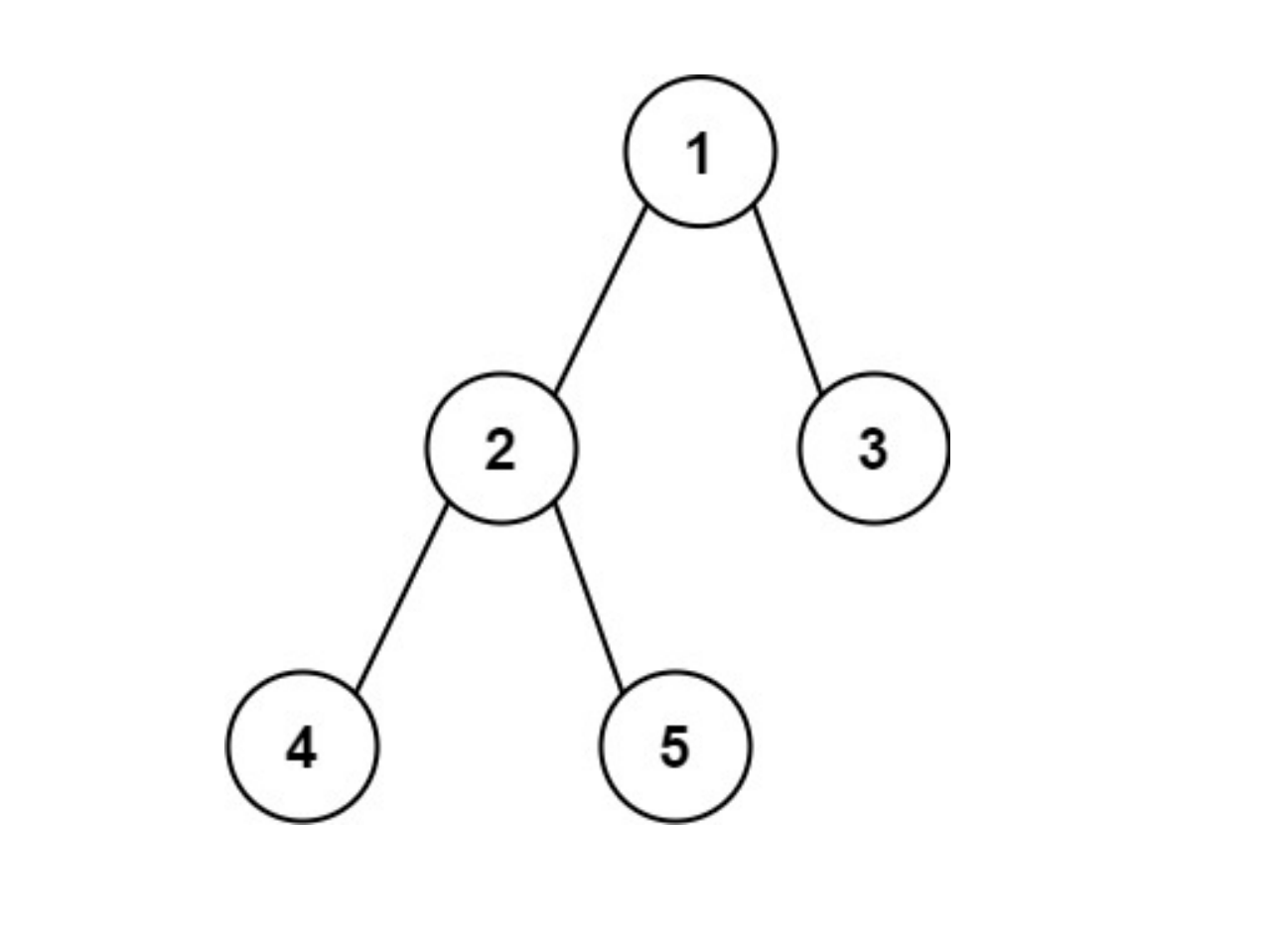
输入:root = [1,2,3,4,5]
输出:3
解释:3 ,取路径 [4,2,1,3] 或 [5,2,1,3] 的长度。
示例 2:
输入:root = [1,2]
输出:1
一开始以为就是根节点的左右子树的深度之和,后来发现最长路径不一定经过根结点。
class Solution {//直径,即树中找最长路径,最长路径不一定经过根结点//对于经过的每一个结点来说,最长路径就是左右子树的深度 之和int maxd=0; //记录最大直径public int diameterOfBinaryTree(TreeNode root) {height(root);return maxd; }//递归求深度public int height(TreeNode root){if(root==null)return 0;int left=height(root.left);int right=height(root.right);//在遍历的过程中找以每个结点为根的最大直径maxd=Math.max(maxd,left+right); //将每个节点最大直径(左子树深度+右子树深度)当前最大值比较并取大者return Math.max(left,right)+1; //返回结点深度}
}








)






WMS-窗口动效概述)



